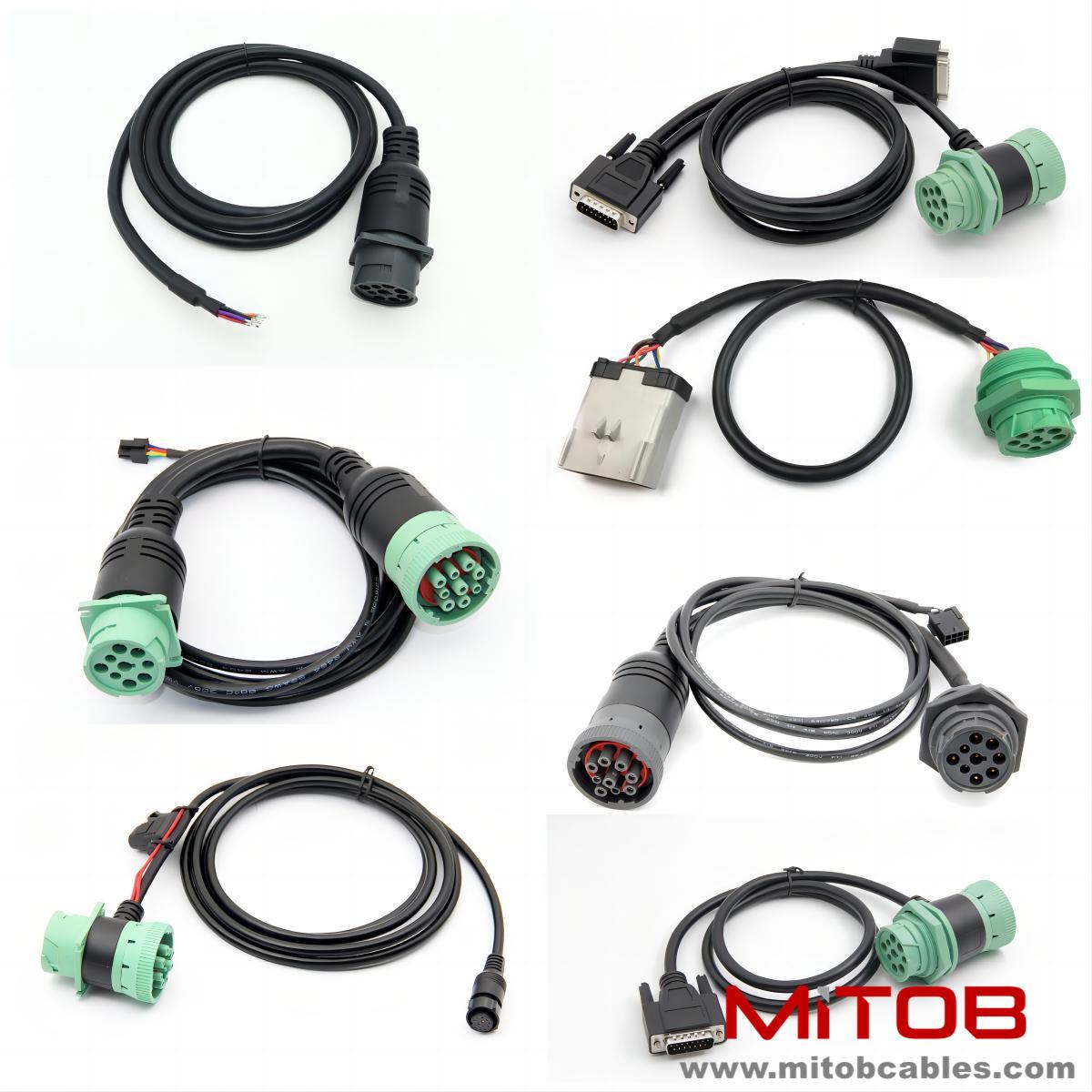The Influence of J1939 Cable Manufacturing Materials on Its Function
J1939 cable is used for Controller Area Network (CAN) communication in industrial fields such as automobiles and ships. Its manufacturing materials largely determine the electrical performance, mechanical performance, and environmental adaptability of the cable, which in turn affects its functionality. The following is a specific analysis:
Material
Material type: High purity copper is usually used as the conductor material.
The impact on functionality: Copper has good conductivity and thermal conductivity, which can reduce resistance, minimize attenuation and distortion during signal transmission, and ensure high-speed and accurate data transmission as required by the J1939 protocol. Meanwhile, good thermal conductivity helps to dissipate heat during long-term use, avoiding performance degradation or malfunction caused by overheating.

Insulation material
Material types: Common insulation materials include polyvinyl chloride (PVC), cross-linked polyethylene (XLPE), fluoroplastics, etc.
Impact on functionality: Insulation materials need to have good electrical insulation properties to prevent signal leakage and short circuits. PVC has lower cost, certain insulation properties and mechanical strength, but relatively poor resistance to high temperature and chemical corrosion. XLPE has better high temperature resistance, mechanical properties, and insulation properties, and can adapt to a wider range of working temperatures, ensuring stable operation of cables under different environmental conditions. Fluoroplastics have excellent insulation performance, as well as excellent corrosion resistance, high temperature resistance, and low smoke and halogen-free characteristics, making them suitable for situations that require extremely high safety and reliability, ensuring that signal transmission is not interfered with in harsh environments.
Shielding material
Material type: Generally, copper wire woven mesh, aluminum foil, or a combination of both are used as the shielding layer.
Impact on functionality: The signals transmitted by J1939 cables are susceptible to external electromagnetic interference. Shielding materials can effectively block the intrusion of external electromagnetic waves, while preventing internal signals from radiating outward, ensuring the integrity and stability of the signals. Copper wire woven mesh has good conductivity and flexibility, can provide good electromagnetic shielding effect, and can withstand a certain degree of stretching and bending. Aluminum foil shielding has high shielding effectiveness, can effectively reflect electromagnetic waves, and is lightweight and cost-effective. The combination of the two can further improve the shielding effect and meet the requirements for use in complex electromagnetic environments.
sheathing material
Material type: Common sheath materials include PVC, polyurethane (PU), chloroprene rubber, etc.
The impact on functionality: Sheath is mainly used to protect the internal structure of cables from mechanical damage, chemical corrosion, and environmental factors. PVC sheath has good wear resistance, water resistance, and chemical corrosion resistance, which can provide reliable protection for cables in general environments. PU sheath has higher strength, flexibility, and wear resistance, suitable for situations that require frequent movement or bending, and can extend the service life of cables. The chloroprene rubber sheath has excellent weather resistance, oil resistance, and flame retardancy, which can adapt to harsh outdoor environments and workplaces with oil stains, ensuring the normal operation of cables under various complex conditions.
Contact: Kevin
Phone: 0086-18823374992
E-mail: kevin@mitobcable.com
Whatsapp:
Add: Bld B2, Floor7 , Xinghe Zhongkai AI Industrial Park, Zhongkai High-tech Zone, Huizhou,China